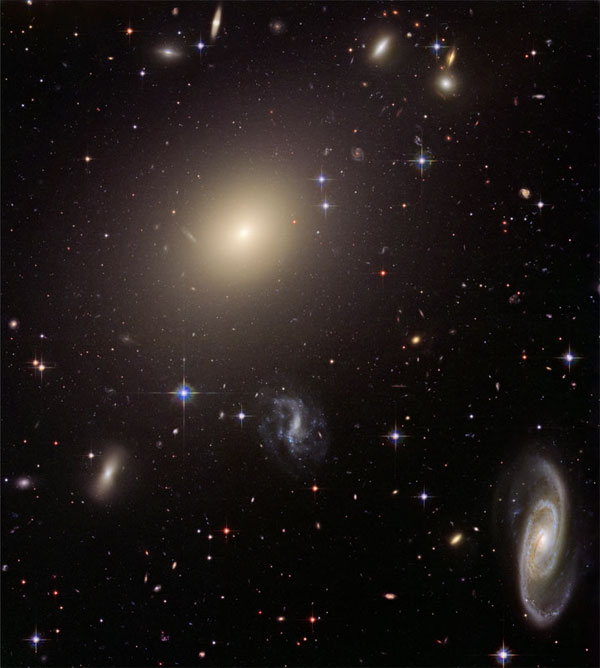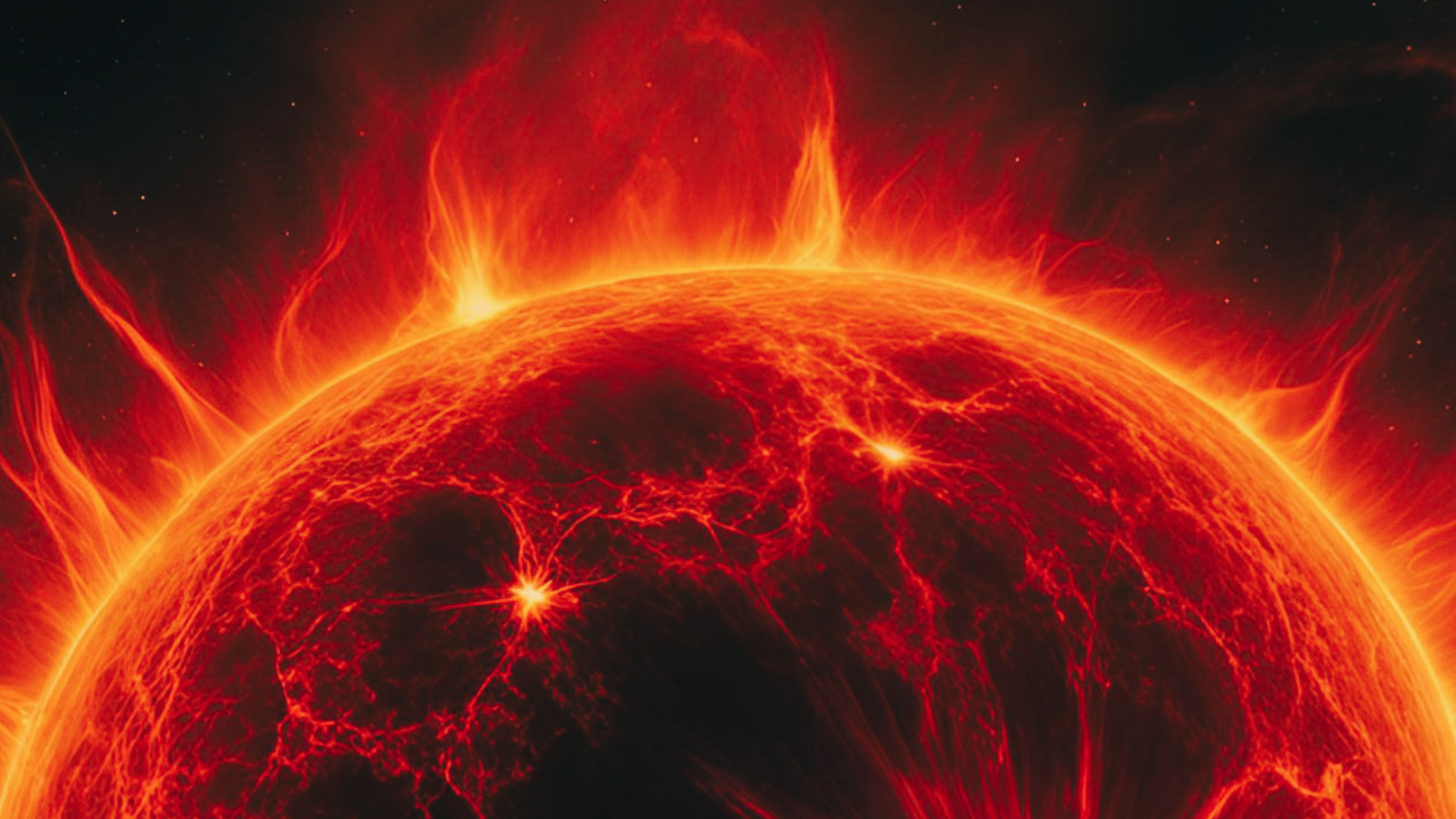When Did Science Become the Enemy?

You, dearreader, are one in a thousand.
The factthat you're confronting this column on a web site devoted to space science andastronomy makes you roughly as rare as technetium. Despite the fact thatastronomy is one of the two most popular science subjects in American schools(the other is biology), it's really not that popular.
Theoverwhelming majority of the citizenry has other interests, and looming largeamong them are the peccadilloes and personal intrigues of the rich and famous. Consider the contrast: in the past week the Space Telescope Science Institutereleased a startlingly detailed photo of a distant cluster of galaxies, apicture that gives even the non-expert a good idea of the structure of these,the largest entities in the universe. The photo of cluster Abell S0740-animage that would have bedazed every previous generation of humans-probablydidn't even make it to the front section of your local newspaper.
However,what did garner front-page ink last week, not to mention huge dollops ofchatter on talk radio, was the unexpected death of Anna Nicole Smith, a formerPlayboy Playmate and reality TV star.
Moviedirector Frank Capra wasn't disclosing a staggering new truth in noting that"what interests people is people." One dead-obvious reason is that those whoare thoroughly unresponsive to their fellow humanoids don't get a lot of representationin the next generation. We're most interested in people, in the same way thatclick beetles are most interested in click beetles. That's evolution.
But why theseemingly preternatural fascination with famous personalities, be they powerfulfigures (politicians, for example) or mere celebrities, as was Ms Smith?
That, too,seems to have a clear evolutionary benefit. Unlike most of the beasts of theforest, we're quite good at learning things. Stories-made possible by speech-are efficient ways of conveying life lessons to the young without the troubleand danger of actually having to demonstrate. Hearing stories about successfulpeople, as well as those who have fallen, could prompt us to imitate thebehaviors of the former and avoid those of the latter. Heroes, in other words,have survival value.
Breaking space news, the latest updates on rocket launches, skywatching events and more!
Thepeculiar thing is that American heroes aren't often very good at science. Indeed, in much popular culture, it's only the villains who're conversant withMaxwell or Einstein. The "mad scientist" has become such a cultural icon thatthe Royal Society held a special lecture on the subject. Some of the mad menof science (and they are, overwhelmingly, men) are just evil characters intenton destroying the world, taking over the world, or simply rearranging the worldaccording to their personal predilections. Dr. No and Dr. Evil come to mind,as do Lex Luthor, Dr. Octopus, the overly Teutonic Dr. Strangelove, and theGreen Goblin.
How didscientists become the enemy? I mean, really: who would you rather have helpyou take a calculus final... or for that matter, cure the common cold or figureout the nature of dark energy: Spiderman or Green Goblin? Science is useful.
And if thescientists in popular media haven't slipped entirely to the dark side, they'veat least gone bonkers. They've become obsessed with some narrow field ofresearch, and lost sight of the big picture. When a prehistoric monster isshambling through a major metropolis, wreaking havoc and destruction, there'salways some lab-coated PhD who's interfering with the steely-eyed militarytypes, screaming "we have to save it for science!" And just to make sure thatthese howling academics won't become your role model, they're usually portrayedas short, ugly bald guys with social grace and sex appeal on a par with Ben therodent.
Thisanti-science stuff seems to have arisen in the 19th century, when the pastorallifestyle of the English countryside was being threatened by the steam engine. At the same time, Victor Frankenstein was endeavoring to replace sex andfamilies by creating a barely functional human simulacrum in the lab (using notmuch more than Tesla coils and scrounged parts), and Dr. Faustus was outhawking his soul for some knowledge.
That's allEuropean. But when it comes to anti-science bias, Americans are hard to beat. Our frontier heritage surely plays a role. When facing off against brutalmountains, a harsh climate, aggressive animals, and an indigenous populationthat might not cotton to new arrivals, are you better off wielding Newton's equations or a Bowie knife? American heroes are survivors, as television viewersknow.
Inaddition, and since the Second World War, the public's perception of sciencehas been influenced by the destructive potential of some of its products. These range from the evil wrought by Nazi scientists to the development ofscary atomic power. Today, the threats posed by thinking machines or geneticengineering are the workaday staples of mad, bad science. That's just movingwith the times, but the public's reaction is the same: this stuff could bedangerous, and besides I don't understand it. Ergo, I'll bolster myself-esteem by putting you down because you do.
So it's nosurprise that a discipline like astronomy - as popular as it is - doesn'treally electrify most folks. The combined circulation of Astronomy and Sky& Telescope is roughly 200,000 (with readership about twice that). Thecirculation of People magazine is 3,700,000.
Themembership of the Astronomical League, a national organization of amateurastronomers, is 16,000. The National Mah Jongg League has 275,000.
You are,very literally, one in a thousand. But there's little reason to grouse. Thecult of personality, while mesmerizing, isn't going to guide Homo sapiens intoa better future. You're like the pioneer ants - the small percentage of antsthat dare to explore, and who are, ultimately, responsible for the colony'slong-term survival.
Anna NicoleSmith may get the column inches now, but the future is yours.
- Darwin Day: A Dialog between Science and Religion
- Intelligent Design: An Ambiguous Assault on Evolution
- Poll: Public Divided on Evolution
- Nobel Prize Winners Speak Up to Support Evolution
- Court Case Threatens to 'Drag Science into the Supernatural'
- Top 10 Missing Links in Human Evolution
- Evolution's Vestigal Organs
- Top 10 Creation Myths

Seth Shostak is an astronomer at the SETI (Search for Extraterrestrial Intelligence) Institute in Mountain View, California, who places a high priority on communicating science to the public. In addition to his many academic papers, Seth has published hundreds of popular science articles, and not just for Space.com; he makes regular contributions to NBC News MACH, for example. Seth has also co-authored a college textbook on astrobiology and written three popular science books on SETI, including "Confessions of an Alien Hunter" (National Geographic, 2009). In addition, Seth ahosts the SETI Institute's weekly radio show, "Big Picture Science."
